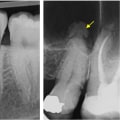Medical imaging is an essential component of modern healthcare, serving as a cornerstone in diagnosing, monitoring, and treating various medical conditions. The primary purpose of medical imaging is to visualize the internal structures and functions of the body in a non-invasive or minimally invasive manner. From broken bones and soft tissue injuries to complex organ systems and neurological functions, imaging technologies allow healthcare professionals to see beyond what physical exams and laboratory tests can reveal. By offering detailed and accurate views of internal anatomy, medical imaging enables timely and precise decision-making that can significantly impact patient outcomes.
Diagnostic Precision and Early Detection
One of the most critical purposes of medical imaging is early detection of diseases, particularly those that are asymptomatic in their early stages. Technologies such as X-rays, CT scans, MRIs, ultrasounds, and PET scans are designed to detect abnormalities like tumors, infections, blood clots, and structural damage. In cancer treatment, for example, the ability to detect and monitor tumors early on through imaging can mean the difference between early intervention and advanced disease progression. Medical imaging allows doctors to pinpoint exact locations, sizes, and characteristics of anomalies, aiding in swift and targeted treatment plans.
Guiding Treatment and Interventions
Medical imaging also plays a vital role in guiding therapeutic interventions. In surgery, real-time imaging tools like fluoroscopy or intraoperative MRI help surgeons perform precise operations by providing continuous visual feedback. Interventional radiology relies heavily on imaging to guide catheters, needles, or surgical tools to specific areas of the body, often allowing for less invasive procedures with quicker recovery times. Even routine tasks like setting a broken bone or administering a targeted injection benefit from imaging assistance to ensure accuracy and safety.
Monitoring Disease Progression and Treatment Efficacy
Another major purpose of medical imaging is to monitor how a condition evolves over time or responds to treatment. For chronic illnesses like heart disease, arthritis, or cancer, periodic scans help doctors assess whether treatments are working or if adjustments are needed. For example, a cancer patient undergoing chemotherapy may receive periodic CT or PET scans to measure tumor shrinkage or detect metastasis. Imaging provides a measurable and visual means of tracking progress, helping healthcare teams make informed decisions and refine their care strategies.
Supporting Preventive Healthcare and Screenings
Medical imaging isn't reserved only for when symptoms appear; it’s also integral to preventive healthcare. Mammograms, colonoscopies, and cardiac screenings are standard imaging-based tools used to identify potential health risks before they become serious conditions. Through imaging, clinicians can establish baselines, identify risk factors, and encourage lifestyle changes or early interventions to prevent future illness. Preventive imaging enhances overall population health by promoting early awareness and action.
Educational and Research Applications
Beyond clinical use, medical imaging plays a pivotal role in education and research. Medical students and professionals in training rely on imaging studies to understand human anatomy, recognize pathology, and develop diagnostic reasoning skills. In research settings, imaging allows for the exploration of disease mechanisms, drug effects, and new treatment modalities. Advanced imaging techniques also contribute to the development of artificial intelligence in medicine, where machines are trained to recognize patterns and assist with diagnostics, ultimately pushing the boundaries of what’s possible in patient care.
Accessibility in Imaging Facilities
As imaging technologies continue to advance, ensuring patient access to these services becomes increasingly important. Accessibility in imaging centers includes not only financial or insurance considerations but also physical accessibility for patients with mobility challenges. Facilities must be equipped to accommodate all patients, including those with physical disabilities. That means investing in infrastructure such as wheelchair lifts, platform lifts, and stair climbers, which make it possible for every individual to reach imaging equipment safely and comfortably. These accommodations ensure equitable healthcare and reflect the medical community’s broader commitment to inclusive patient care.
Conclusion: A Vision Beyond the Surface
In essence, the purpose of medical imaging extends far beyond taking pictures of the body—it is about improving lives through visibility, accuracy, and early intervention. It bridges the gap between symptoms and solutions, empowers providers with critical information, and fosters patient trust in their care journey. As technology continues to evolve, medical imaging will remain an indispensable tool in delivering efficient, precise, and compassionate healthcare. Its success, however, is also dependent on the systems and environments that support it, including a commitment to accessibility, accuracy, and continuous innovation.






